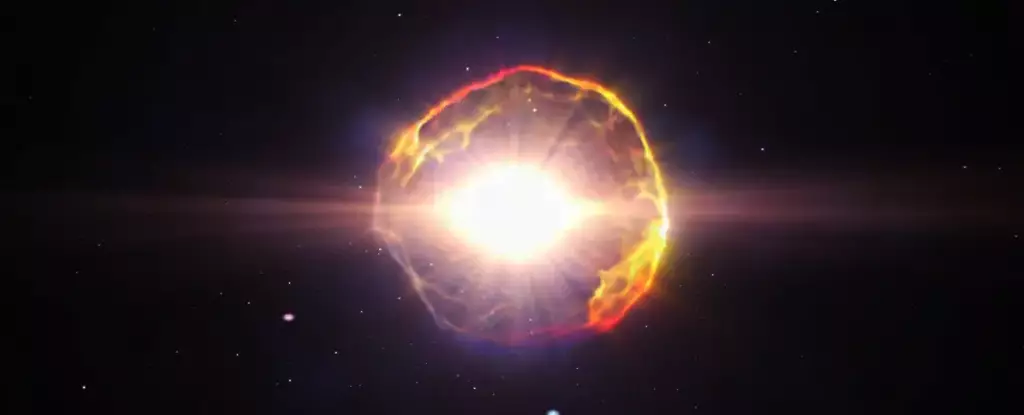A cosmic event of epic proportions is on the horizon, as a nearby star is gearing up to burst in a massive explosion known as a nova. Situated 3,000 light-years away from Earth, this spectacular show is expected to outshine even our North Star. The event is anticipated to be so grand that it will be visible to the naked eye for up to a week, offering skygazers a once-in-a-lifetime opportunity to witness this celestial phenomenon.
The impending nova, named T Coronae Borealis, is caused by a white dwarf – the remnant core of a deceased star – locked in an orbital dance with a giant red star. As the red giant consumes nearby stars, the white dwarf absorbs the hydrogen-rich materials, gradually increasing in temperature. Eventually, the white dwarf reaches a critical point where all that collected energy is unleashed in a colossal cosmic explosion, resulting in the spectacular nova display.
Although the forthcoming explosion is a sight to behold, it’s essential to note that T Coronae Borealis has exhibited this behavior multiple times in the past. Astronomers first recorded its eruption in the late 1800s, with subsequent bursts occurring roughly every 80 years. Despite the distance of the star from Earth, the light from the explosion takes thousands of years to reach us. This upcoming display will mark the last viewing opportunity for this nova until the early 2100s.
To ensure you don’t miss the chance to witness this stunning cosmic event, it’s advisable to stay updated with information from NASA. Subscribing to the @NASAUniverse channel on X will provide you with real-time updates on the nova’s progress. When the time comes, head to a location away from city lights with clear skies to get the best view. Utilizing a star map app on your phone can help you locate the constellation where the nova will appear. Remember to give your eyes adequate time to adjust to the darkness for optimal stargazing.
In addition to the impending nova explosion, skygazers can also look forward to other astronomical occurrences this year. A total solar eclipse is set to sweep through Canada and the US on April 8, offering a rare and mesmerizing sight. Simultaneously, the green comet 12P/Pons-Brooks is becoming visible from Earth and is expected to brighten enough to be seen with the naked eye in the coming weeks. Combining these events with the spectacular nova explosion, 2022 is indeed a year filled with exciting celestial displays.
The upcoming nova explosion presents a unique opportunity for astronomy enthusiasts and skygazers to witness a breathtaking display of cosmic energy. By staying informed and well-prepared, individuals can maximize their chances of viewing this once-in-a-lifetime event and create lasting memories of the wonders of the universe.


Leave a Reply